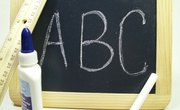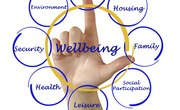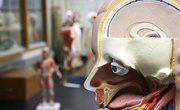Life experiences, values, family and friends impact the way people behave. Activities that help teens gain insight into their personality can shape the way they interact with people and influence their career paths. It’s important to celebrate similarities and differences as you discuss the results. The goal of any personality exercise is not to change individuals but to provide an understanding and appreciation of what makes one person different from another.
Values Show What Matters
Help teens learn what they value with an activity that examines what’s most important in their daily lives. Ask students to write the 10 things they value most. Use examples such as family, friends and school. Have students rank their values in order of importance. Ask for volunteers to share their top three values with the group. Write the responses on the board and hold a discussion about similarities and differences. Discuss with students what kinds of things influence their values and how these values guide behavior.
Personality Assessment for Career Exploration
Renowned personality researcher, John Holland, created a personality grid to help guide career decision-making. Since high school provides a critical juncture for future planning, use Holland’s research to help teens explore career options. List the words from his type indicator on the board. These should include realistic, investigative, artistic, social, enterprising and conventional. Ask teens to pick the word that best describes their personality. Have them brainstorm career options that fit the word they selected. Further this activity by asking participants to create a career and educational path that would lead them to an ideal profession.
Personal Traits Provide Personal Insight
Conduct an activity that helps students learn more about the driving forces of their personality. Provide a list of common personality traits for each participant. Include words like dependable, nurturing, assertive, hard-working, sympathetic, patient and shy. Ask students to select 10 words that best describe their personality. Have each student eliminate five and then pick the top three that best characterize who they are. Ask each student use their top three words to write a personal mission statement. Have students read their mission statements to the group. Discuss how and why they chose their words, how it felt to eliminate seven of the 10 and what the words say about how they live their lives.
Identify Introverted or Extroverted Personalities
Some students know they’re shy, while others wonder why they’re uncomfortable in social situations. A 2013 study conducted at Florida International University illustrated a method to determine if you’re introverted or extroverted. Give participants a piece of fresh lemon and have them squeeze it into their mouths. Ask them to use cotton balls to soak up the saliva that’s produced. Weigh the cotton balls and record the results. Introverts are more likely to have heavier cotton balls, or more saliva, than extroverts, according to the study. Ask your students if they feel the results are accurate. Discuss if they’re comfortable with the findings and if they’d like to change how they react in social settings.
Related Articles
References
Writer Bio
Dr. Kelly Meier earned her doctorate from Minnesota State Mankato in Educational Leadership. She is the author and co-author of 12 books and serves as a consultant in K-12 and higher education. Dr. Meier is is a regular contributor for The Equity Network and has worked in education for more than 30 years. She has numerous publications with Talico, Inc., DynaTEAM Consulting, Inc. and Kinect Education Group.











